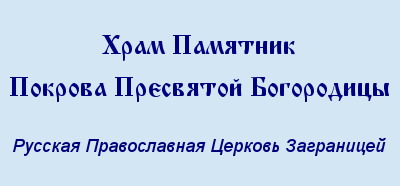Dear Brothers and Sisters,
Christ is Risen!
Congratulations with the feast of the resurrection of the Lord, as well as with the after-feast of Mid-Pentecost!
Last evening we heard the reading of the seventh resurrectional Gospel (John 20: 1 – 10). In this Gospel excerpt, we heard the Holy Apostle and Evangelist John the Theologian narrate how Mary Magdalene came early in the morning, while it was still dark, to the tomb, and saw that it was open and empty. She had not yet seen the angel nor Christ and therefore understood things in a very human or earthly manner. She went to two of the apostles and told them that someone had removed the body of Christ to some other place. Afterwards we heard about how Peter and another disciple ran to see with their own eyes the empty tomb. The other disciple ran faster than Peter because he was younger, and was the first to see that the tomb was indeed empty. When Peter caught up to his friend, they both entered the cave, saw that neatly-folded grave clothes were all that was left in the tomb, and came to believe that truly the Lord had risen. The disciples then exited the tomb and returned home.
Today let’s take note of two separate moments. First, let’s focus our attention on a detail that may appear to add nothing to the story of the resurrection of the Saviour, that is, how Peter was somewhat slower then the other disciple, who, as the Gospel repeats several times, was especially loved by Christ. According to Church tradition, this disciple was John the Theologian, the author of the fourth Gospel, who concealed his name out of humility. For us, the fact the John ran faster isn’t particularly important, but for the author, who was a participant in these events, this was very meaningful because this small detail ties him personally to the risen Christ. John personally came to the cave and saw with his own eyes the empty tomb; therefore, for him personally, every detail is precious. For us these personal details should also become important, because they provide strong proof for the veracity of the accounts of the resurrection of our Lord Jesus Christ. Such small details provide all of the resurrectional Gospel readings a particular liveliness and dynamism. Because of these details, the joy, fear, and excitement of the disciples is strongly palpable. We very much feel that they were eyewitnesses and participants in these great events.
Secondly, let’s consider why the Holy Apostle and Evangelist John the Theologian mentions that the burial cloths were left in the tomb and that the napkin that had covered the head of the Saviour was carefully folded and was lying separately from the other wrappings. Remember that the Evangelist Matthew wrote about how the chief priests spread the false news that the apostles had stolen the body of the Lord Jesus Christ in the night. Matthew went on to write that this falsehood continued to be spread amongst the Jews at the time when he wrote his Gospel. The fact that the shroud remained in the tomb and that the napkin was neatly folded refutes the words of the Jews because thieves never care to leave things in an orderly fashion, but quickly take what they want and leave. It’s hard to believe that the apostles sat in the cave in the middle of the night and carefully unwrapped the dead body, all while the Roman soldiers guarded this cave. St. John the Theologian added information about the linen cloths so as to prove false the words of the Jews, and, in such a way, to safeguard the faithful from temptations and perhaps also to call the Jews themselves to repentance and faith in Christ.
Although we are not eyewitnesses, in the literal sense, of the resurrection of our Lord Jesus Christ, our personal spiritual experiences clearly point to the power of the resurrection. All of us are acquainted with people who have dramatically changed after coming to believe in the risen Christ. Perhaps we see such a change in ourselves. Our personal spiritual encounters with Christ are meaningless for others, but for us are very precious. We live in a world that is constantly trying to distract us from out faith in the Saviour. Therefore, it is imperative that on the one hand, we draw up the living water of which we heard today in the Gospel reading, that is, that we read and study the Holy Scriptures and especially the Gospels, and on the other hand, that we continually and assiduously remember those wonderful moments when we had personal spiritual encounters with Christ, in the same manner as the Holy Apostle John did many years ago in his Gospel.
priest Alexis







